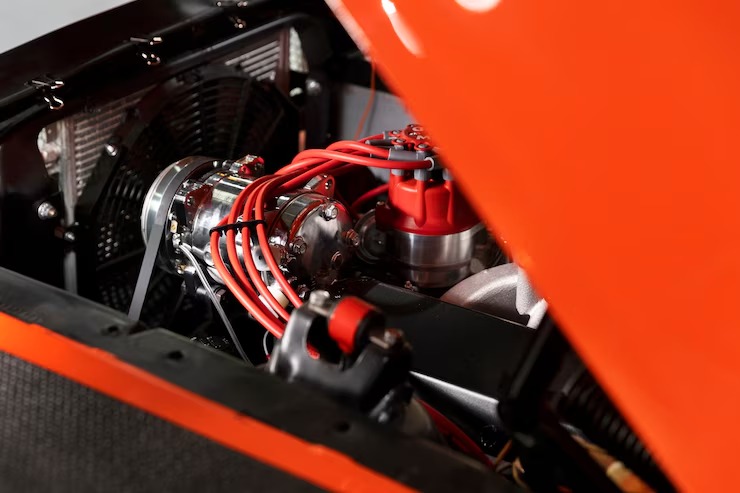Alfa Romeo is a brand synonymous with Italian performance, cutting-edge design, and racing heritage. Over the years, it has continued to evolve, and one of the major technological advances in its newer models is the use of turbocharged engines. Whether you’re looking at the Giulia, Stelvio, or even high-performance Quadrifoglio models, turbocharging plays a central role in delivering power and efficiency. For those exploring options at an Alfa Romero Dealer near Pittsburg, PA, understanding the pros and cons of turbocharged Alfa Romeo engines is essential to making an informed purchase decision. This article takes a deep dive into the performance, reliability, and day-to-day driving experience associated with these modern turbo engines.
What is a Turbocharged Engine?
A turbocharged engine uses a turbine-driven forced induction system to increase the power output of the engine. It compresses the air entering the engine, allowing more air—and therefore more fuel—to be combusted. The result is higher performance from a smaller engine, offering both speed and efficiency. Turbochargers have become a standard feature in Alfa Romeo’s modern lineup, helping the brand meet performance expectations and environmental standards.
Pro: Increased Power and Performance
One of the most appealing aspects of a turbocharged Alfa Romeo engine is the significant boost in horsepower and torque. Turbocharging allows a smaller displacement engine to produce performance levels typically associated with larger engines. This means drivers can enjoy rapid acceleration, higher top speeds, and overall sportier handling. For instance, the Alfa Romeo Giulia’s 2.0L turbocharged engine delivers 280 horsepower, an impressive output for a four-cylinder engine.
This makes turbocharged Alfa Romeos especially attractive to enthusiasts who crave high-performance driving without jumping to the more expensive Quadrifoglio models.
Pro: Better Fuel Efficiency
Turbocharged engines offer a unique combination of power and fuel economy. Because they can produce more power without increasing engine size, they often consume less fuel during normal driving conditions. When cruising at moderate speeds or driving in urban settings, Alfa Romeo’s turbo engines operate efficiently, giving drivers respectable miles per gallon (MPG) figures.
This balance of performance and efficiency makes turbocharged Alfa Romeo vehicles an appealing choice for buyers who want speed without sacrificing daily usability.
Pro: Lower Emissions
Modern turbocharged engines are also designed to meet stricter emission regulations. With proper engine tuning and the use of advanced fuel injection systems, turbo engines can burn fuel more completely, resulting in reduced CO₂ emissions. For environmentally conscious drivers who still want a spirited ride, this is a strong selling point.
Alfa Romeo’s commitment to cleaner engine technology ensures that turbocharged models not only perform well but also stay compliant with evolving global emission standards.
Pro: Lightweight and Compact Design
A turbocharged engine allows for a smaller and lighter powertrain. Instead of installing a heavy V6 or V8, Alfa Romeo can achieve comparable performance using a smaller inline-four with a turbocharger. This lightweight design improves vehicle handling and agility, which are core attributes of Alfa Romeo’s sporty driving experience.
In models like the Giulia and Stelvio, the compact turbo engine helps achieve near-perfect weight distribution, a major factor in delivering the balanced and responsive feel Alfa Romeo is known for.
Pro: Enhanced Driving Experience
Thanks to the combination of power delivery, torque availability at low RPMs, and precise throttle response, turbocharged Alfa Romeo engines provide a thrilling drive. The responsiveness of the engine complements Alfa Romeo’s sharp steering and suspension tuning, making every drive feel engaging.
Turbo lag—the slight delay in power delivery sometimes associated with turbo engines—is minimal in modern Alfa models due to improved engineering and twin-scroll turbo technology.
Con: Turbo Lag (Though Improved)
Despite improvements, turbo lag can still exist in certain driving conditions. Turbo lag refers to the delay between pressing the accelerator and the engine delivering full power. While most Alfa Romeo models have significantly reduced lag, it may still be noticeable during sudden acceleration or at low speeds when the turbo isn’t fully spooled up.
Drivers who are used to naturally aspirated engines might need some time to adjust to this behavior, especially in stop-and-go traffic or urban environments.
Con: Higher Maintenance Costs
Turbocharged engines generally require more maintenance than naturally aspirated ones. The turbocharger itself is a complex component that operates under high temperature and pressure. Over time, this can lead to wear and tear, and repairs or replacements can be costly.
Additionally, regular oil changes and proper coolant levels are crucial to maintaining a healthy turbo engine. Neglecting maintenance can lead to premature turbo failure, which can be an expensive fix.
Con: Premium Fuel Requirement
Most turbocharged Alfa Romeo engines require premium-grade fuel to operate efficiently. This can lead to higher fueling costs over time. Using lower-octane fuel can result in knocking, reduced performance, and long-term engine damage.
For budget-conscious buyers, this is an important consideration. While the fuel efficiency of a turbo engine can offset some of the cost, paying extra at the pump may not be ideal for everyone.
Con: Heat Management
Turbochargers generate a significant amount of heat, and managing that heat is critical for engine longevity. Alfa Romeo engineers have implemented various cooling systems to combat this, but it’s still a factor to consider.
Long drives, especially in warm climates, can strain the cooling systems. Without proper care, overheating may become an issue, especially if the turbo engine is pushed hard regularly.
Con: Depreciation and Resale Concerns
Turbocharged engines may affect long-term resale value, especially if a vehicle has been driven aggressively or not well maintained. Buyers in the used car market often hesitate to purchase turbocharged vehicles due to concerns about wear and reliability.
For owners looking to eventually sell or trade in their Alfa Romeo, it’s important to keep thorough maintenance records to reassure potential buyers and preserve value.
Turbocharged Models in the Alfa Romeo Lineup
Several Alfa Romeo models feature turbocharged engines as standard:
- Giulia (2.0L I4 Turbo): Offers a strong mix of luxury and performance.
- Stelvio (2.0L I4 Turbo): A sporty SUV with dynamic handling and solid fuel economy.
- Giulia Quadrifoglio (2.9L Twin-Turbo V6): High-performance variant delivering 505 horsepower.
- Stelvio Quadrifoglio (2.9L Twin-Turbo V6): Blends SUV practicality with sports car performance.
Each of these models uses turbocharging to enhance their driving dynamics while keeping engine sizes manageable and emissions lower.
Choosing the Right Turbocharged Alfa Romeo
Choosing the right turbocharged model depends on your needs:
- For daily driving and fuel efficiency: Giulia or Stelvio with the 2.0L turbo.
- For high-performance thrills: Quadrifoglio variants with the 2.9L twin-turbo V6.
- For a mix of style, practicality, and performance: Stelvio with optional performance packages.
It’s important to test drive different models and consult with your dealer to understand how each engine setup performs in real-world conditions.
Tips for Maintaining a Turbocharged Alfa Romeo
To get the most out of your Alfa Romeo’s turbo engine, follow these simple maintenance tips:
- Use high-quality synthetic oil and change it regularly.
- Allow the engine to warm up before driving aggressively.
- Avoid shutting down immediately after a hard drive; let it cool for a few minutes.
- Stick to the manufacturer’s maintenance schedule.
- Use premium fuel as recommended in the owner’s manual.
Following these steps can help ensure the longevity and performance of your turbocharged Alfa Romeo.
Conclusion
Turbocharged engines have brought a new era of performance and efficiency to the Alfa Romeo lineup. Understanding the pros and cons is essential before making a decision. On one hand, turbo engines offer enhanced power, better fuel economy, and a thrilling drive. On the other, they require careful maintenance and can lead to higher ownership costs. Ultimately, if you’re a driver who values excitement behind the wheel and is willing to invest in upkeep, a turbocharged Alfa Romeo could be the perfect fit.

































